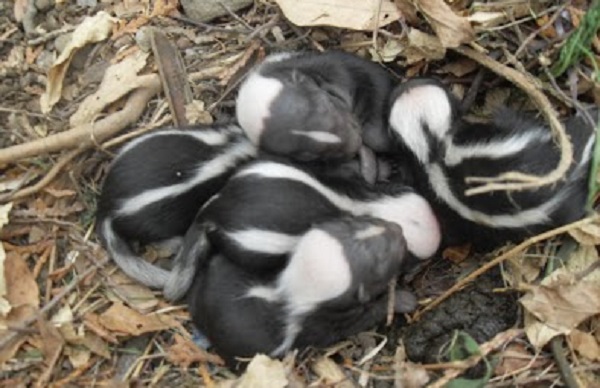Scram the Skunk probably has a worse reputation than he deserves. The first association most people have with skunks is their really stinky spray. We all recoil from the smell that hits us when one of these creatures meets an untimely end on the side of a road. Anyone with an adventurous and curious dog has likely encountered the potent aroma that sticks around far too long on fur no matter how much shampoo you apply.
The truth is that these black-and-white mammals are more shy than aggressive. Their defence mechanism is offensive to your senses, but it doesn’t pose any real danger. Skunks don’t set out to harm humans or dogs, but when they feel threatened, they definitely don’t hesitate to lift their tails and take aim. Even so, having one take up residence on your property is often unwelcome, particularly if you have pets that spend time outside. Should a skunk make your space its own, enlist the help of our Ajax humane skunk control experts.
What Environments Do Skunks Prefer?
The ideal habitat for skunks is in a nice, thick forest where ample food choices and abundant possibilities for shelter abound. Their claws are perfect for digging dens out of the forest floor, and they prefer to do so in areas that provide additional protection, such as beneath a fallen tree. Never passing up an opportunity, these mammals have no trouble kicking smaller burrow dwellers out of their homes and claiming the holes for themselves.
Skunks are solitary creatures, except for breeding females that stay with their young for months. In the winter, however, it isn’t uncommon for groups to band together in dens to keep warm. Scram and his ilk forage alone, seeking out just about anything edible. These animals are omnivores and feast on flowers and frogs and everything in between. They typically range up to 1.5 miles from their den in search of grub, but they like to stick close to home. Predators and scarce food sources are two things that lead a skunk to search out new turf.
Why Is There a Skunk Under My Deck?
Though a skunk’s preferred habitat is a nice, healthy forest, humans have encroached on and destroyed these environments, forcing the forest dwellers to adapt to survive. Since these critters are omnivores, their diet is flexible enough to include foods they would not find in the forest. Unfortunately, this includes people’s garbage. Your waste is one of the primary attractants for an urban skunk. They also won’t pass up a good meal of pet food. They are quite adept at getting into both bins and bags.
The second thing that makes your place attractive is the availability of good shelter. Skunks are more likely to set up residence in the winter months since the frozen ground makes digging a challenge, and sustenance is harder to come by. The houseguests under your deck are likely to stick around all winter while they sleep for weeks on end, surfacing only to search for food. They may stay well into the springtime if your home continues to offer safe shelter and convenient meal sources.
What Is a Homeowner To Do?
To make your home less appealing to skunks, make sure your trash bin lids are kept tightly secured. If you store pet food outdoors, put it in an airtight, latching container. When you fire up the grill or dine outside, clean up immediately afterwards and check for that stray plate that may have been lifted in the wind and carried to the other side of the yard.
Skedaddle Humane Wildlife Control can help you assess your property for its skunk appeal and take steps to prevent an intrusion. If this striped mammal is already around, our wildlife technicians are trained in safe and humane removal. Contact us today for more information or to schedule an appointment.



